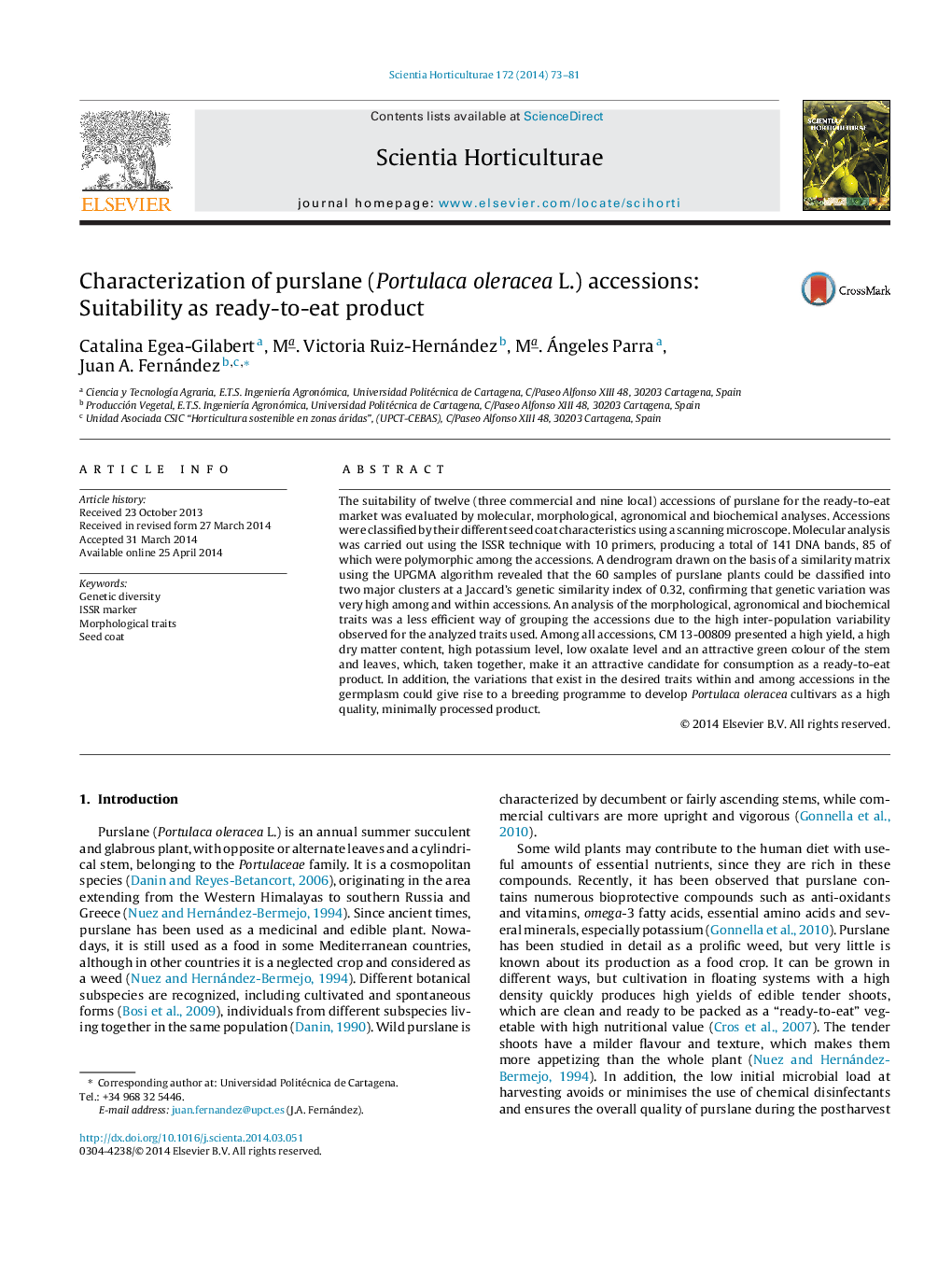| Article ID | Journal | Published Year | Pages | File Type |
|---|---|---|---|---|
| 4566816 | Scientia Horticulturae | 2014 | 9 Pages |
•We study the genetic variability of 12 genotypes of purslane.•We evaluate the genotypes by molecular, morphological, agronomical and biochemical analysis.•Genotype CM 13-00809 is an attractive candidate for consumption as a ready-to-eat product.
The suitability of twelve (three commercial and nine local) accessions of purslane for the ready-to-eat market was evaluated by molecular, morphological, agronomical and biochemical analyses. Accessions were classified by their different seed coat characteristics using a scanning microscope. Molecular analysis was carried out using the ISSR technique with 10 primers, producing a total of 141 DNA bands, 85 of which were polymorphic among the accessions. A dendrogram drawn on the basis of a similarity matrix using the UPGMA algorithm revealed that the 60 samples of purslane plants could be classified into two major clusters at a Jaccard's genetic similarity index of 0.32, confirming that genetic variation was very high among and within accessions. An analysis of the morphological, agronomical and biochemical traits was a less efficient way of grouping the accessions due to the high inter-population variability observed for the analyzed traits used. Among all accessions, CM 13-00809 presented a high yield, a high dry matter content, high potassium level, low oxalate level and an attractive green colour of the stem and leaves, which, taken together, make it an attractive candidate for consumption as a ready-to-eat product. In addition, the variations that exist in the desired traits within and among accessions in the germplasm could give rise to a breeding programme to develop Portulaca oleracea cultivars as a high quality, minimally processed product.
